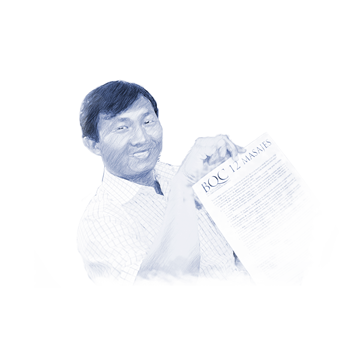

Many of these massages are also used in Tai-Qi and other oriental techniques but Dien Chan gives meaning to those massages by explaining their actions and effects based on reflex sketches.
The experience of Prof. Bùi Quốc Châu's students, patients and all students have helped him to present them in a logical order.
These 12 massages should be used between 20 and 30 times each, depending on the patient's physical and mental condition. The important thing is not the amount of time devoted to each massage but whether the patient feels warmer as a result.
If the patient feels warmer very quickly, then you may conclude this is a yang person, so you should begin each massage with the right hand (yang) and finish on the yin side (left) to ensure balance.
A yin patient will need more massages than the yang patient to achieve the same results.
It is very important to practise the massages on a daily basis, listen to the body, and be aware of its response.
Each patient should remember which massages to use according to his own needs and apply them in the mornings.
For those who are not as diligent or do not have time in the morning for all 12 massages, the two main massages are massage n°7 (yang) and n°12 (yin).
These two massages are complementary and rebalance the body after waking up. In general, teenagers will not need the 12 morning massages as often as adults, except in winter to prevent colds (massage n°7) or before a stressful or difficult situation such as an exam or oral presentation (massage n°9).
Propose and teach these 12 massages to your patients and friends. They have changed many people's lives by helping the body to find the strength for natural autoregulation. To help you to communicate and promote the 12 massages, we offer a free eBook that you will receive after filling that form.
The best way of teaching the 12 morning massages to friends and patients is to practise them. All these exercises must be repeated thirty times. We have to feel the heat and the Qi circulates.
